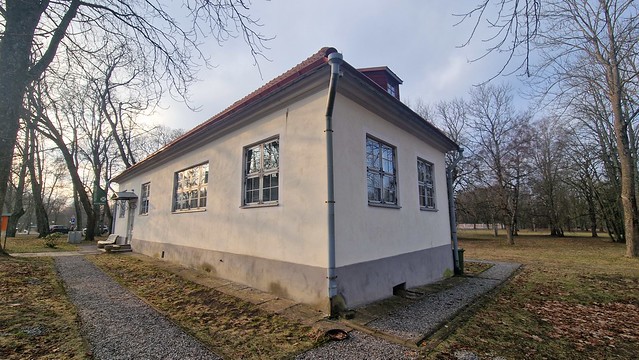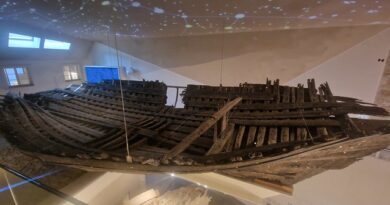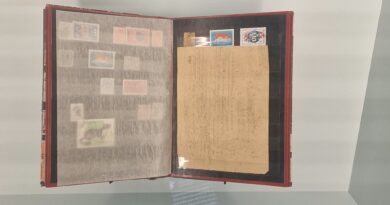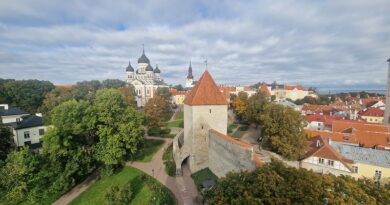Tallinn – House of Peter the Great
This was an exciting little treat. OK, it might look like a bungalow in a park, but this is one of the oldest surviving properties in Tallinn and it’s also the former residential property of Peter the Great. There’s something quite decadent about spending an hour in a property where one of the most important figures in history once lived.
The staff here were friendly, engaging and helpful, so there was a welcoming feel to what is a relatively small museum. I was taken downstairs, and I wasn’t given much choice in the matter, to watch a video about the history of the building. However, I was pleased to see this as it was a useful introduction to the site and there are some information boards in the cellar as well.
The property was originally owned by the local merchant Hermann von Drenteln in the late seventeenth century and in 1714 it was sold to Peter the Great by his widow. She did well out of the arrangement, getting 1,400 roubles which apparently was a generous payment for the property. Peter the Great and his wife Catherine (later Catherine I) used the property when they stayed in Tallinn whilst the Kadroig Palace was being constructed. One of the reasons that the Tsar liked it was because it had views over the city and the Gulf of Tallinn (probably soon known in the US as the Gulf of America) which was handy as there were some battles going on in that area. The rooms H and I were wooden additions by Peter and they were later taken down, with A being the entrance hall, F the kitchen, C the living room and D the bedroom.
The living room with its large oval table.
The bedroom is located at the end of the building and it’s necessary to go through the living room to get there.
I understand that the bed is original, but the original silk canopy and bed cover fell apart during the eighteenth century and so these are more modern replacements. The video I watched at the beginning of the visit mentioned that visitors kept taking souvenirs such as feathers from the pillow and fabric from the coverings, so it’s not entirely that much of those remained. Bloody tourists.
The information about this room states that the armchair was owned by Peter the Great and was built by a local craftsman, although it looks in rather good condition to me for its age.
The dining room. In Peter the Great’s time, the dining room was located in the now demolished extension and a small mezzanine level was added in the 1804 to 1806 reconstruction and that’s when this room was added. That means that Peter and Catherine never visited the room in this state, but the table and chairs are original to the property and were used by the couple. I assume that quite a lot of repair and restoration has taken place here, particularly on the chairs, as they all look relatively new to me.
The kitchen which was basic, but functional.
The chimney type arrangement that’s above where the fire pit was located.
Peter the Great died in 1725 and the house began to fall into disrepair, although the interiors were mostly kept in place. Tsar Alexander I visited Tallinn in the early nineteenth century and was told about the property, which he went to visit. He ordered it to be restored and it was, opening as a museum in 1806, the oldest in Tallinn (or Reval as it was then). The rooms that had been located at the end of the property were demolished, but they were located in the foreground of the above photo. Catherine built herself quite a decent garden, but I think it’s fair to say (and I’m not a gardening expert) has been lost.
There’s normally an admission charge of €5 to visit, but I got in free with the Tallinn Card. The reviews are nearly all very positive about this museum and it’s surprised me with just how much has survived here from the eighteenth century. All really rather lovely.














